





Alphadale
Application instruction:
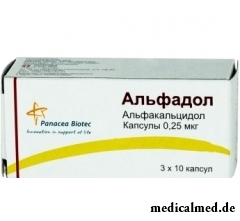 The alphadale – vitamin, the regulator of calcium-phosphorus exchange, promotes completion of deficit of D3 vitamin.
The alphadale – vitamin, the regulator of calcium-phosphorus exchange, promotes completion of deficit of D3 vitamin.
Form of release and structure
Dosage form – capsules: gelatinous, a round form, red color with transparent structure, in capsules – light yellow oily transparent liquid (on 10 pieces in the blister, in a cardboard pack of 3, 6 or 10 blisters).
Active ingredient of Alfadol – альфакальцидол, in 1 capsule – 0,25 mkg.
Auxiliary components: corn oil, butylhydroxyanisole, the dehydrated ethanol (in a ready-made product is absent).
Structure of a cover of the capsule: глицерол, methylparahydroxybenzoate, 70% sorbitol solution, пропилпарагидроксибензоат, soybeans oil (in a ready-made product it is not found), dye crimson (Ponso 4R), gelatin, the water purified.
Indications to use
Alfadol's use is shown at the diseases caused by disturbance of exchange of phosphorus and calcium against the background of insufficient endogenous synthesis 1,25 D3 dihydroxyvitamins:
- Osteomalacy, D-resistant vitamin rickets;
- Osteoporosis, including senile, post-menopausal, steroid;
- Hypoparathyrosis, pseudohypoparathyroidism;
- Osteodystrophy at a chronic renal failure.
Contraindications
- Hypervitaminosis of D;
- Hypercalcemia, gipermagniyemiya, hyperphosphatemia (except treatment of a hypoparathyrosis);
- Period of pregnancy and breastfeeding;
- Intolerance of fructose;
- Age up to 3 years;
- Age up to 12 years (at osteoporosis, a hypoparathyrosis and a pseudohypoparathyroidism);
- Hypersensitivity to drug components.
With care patients should use Alfadol with a nephrolithiasis, atherosclerosis, chronic heart failure, a chronic renal failure, the sarcoidosis or other granulomatoses, an active form of a pulmonary tuberculosis raised by risk of development of a hypercalcemia (especially at a nephrolithiasis), a hypercalcuria, to children 3 years are more senior.
Use in II and III trimesters of pregnancy is possible only in cases of exceeding of the expected advantage of therapy for mother over potential threat of emergence in a hypersensitivity fruit to vitamin D, a syndrome of specific elfopodobny appearance, an aortal stenosis, a delay of intellectual development, epithelial body function suppression.
Route of administration and dosage
Capsules are intended for intake.
Use of drug should be begun with the minimum dose and to accompany with control of level of concentration of calcium and phosphorus in a blood plasma once a week. Increase in a dose should be made gradually, increasing it by 0,25 or 0,5 mkg a day before emergence of stable biochemical indicators. After achievement of a minimal effective dose blood test is recommended to spend at least 1 time each 3-5 weeks.
The dose and duration of treatment are appointed by the doctor on the basis of clinical indications individually for each patient.
The recommended dosing for adults and children is more senior than 12 years:
- Initial dose: 1 mkg a day;
- Maintenance dose: 0,25-2 mkg a day;
- Rickets and osteomalacy: on 1-3 mkg a day within 2-3 months and more;
- Osteoporosis, including post-menopausal, steroid, senile: on 0,5-1 mkg a day;
- Hypoparathyrosis: on 1-4 mkg a day;
- Osteodystrophy at a chronic renal failure: on 1-2 mkg a day, a course of treatment – 2-3 months, 2-3 courses within 12 months.
The daily mode of dosing for children from 3 to 12 years:
- Rickets and osteomalacy: on 1-3 mkg, the course of treatment – is not less than 2-3 months;
- Osteodystrophy at a chronic renal failure: on 0,5-1 mkg, a course – 2-3 months, 2-3 courses within 12 months.
Alfadol's use can continue from 2 to 12 months and longer.
Side effects
- Alimentary system: dryness in a mouth, anorexia, nausea, vomiting, heartburn, a sensation of discomfort in the area epigastriums, an abdominal pain, diarrhea, a lock, slight increase of activity of liver enzymes, disturbance of functions of a liver;
- Urinary system: acute renal failure;
- Cardiovascular system: increase in arterial pressure, tachycardia;
- Nervous system: drowsiness, general weakness, headache, fatigue, dizziness;
- Musculoskeletal system: moderate muscle, bones, joints pains;
- Allergic reactions: skin itch, rash;
- Laboratory indicators: at heavy disturbances of functions of kidneys – development of a hyperphosphatemia, slight increase of level of concentration of lipoproteins of high density, a hypercalcemia.
Special instructions
At a chronic renal failure use of drug is begun only after preliminary correction of a hyperphosphatemia.
Except regular control of concentration of calcium and phosphates in a blood plasma, it is necessary to watch activity of an alkaline phosphatase, at patients with a chronic renal failure – weekly.
Not to allow development of a hypercalcemia, the dose of drug needs to be lowered after normalization of maintenance of an alkaline phosphatase in a blood plasma.
At a hypercalcemia and a hypercalcuria it is necessary to cancel Alfadol's reception and to reduce calcium consumption. Usually normalization of level of calcium in a blood plasma occurs after a week break. It is recommended to resume reception about 1/2 doses, applied to a break.
It is necessary to consider that because of unequal sensitivity to vitamin D at different patients, use even of therapeutic doses can cause the phenomena of a hypervitaminosis.
The balanced food is prevention of a hypovitaminosis D.
At purpose of drug children should be careful, not to allow overdose, to begin treatment with reception of low doses, to accompany gradual increase in a dose with control of level of content of calcium in a blood plasma, ratios of creatinine and calcium in urine.
Prolonged use of vitamin D increases risk of development of a growth inhibition at children.
The need for vitamin D for advanced age can increase as vitamin D absorption decreases, insolation time, ability of skin to synthesize D3 provitamin, the frequency of development of a renal failure increases.
Alfadol's use can cause drowsiness and dizziness therefore during treatment patients are recommended to refuse control of vehicles and mechanisms.
Medicinal interaction
The perhaps additive interaction of an alfakaltsidol with medicines of vitamin D and its derivatives therefore these combinations should be avoided because of the increasing risk of development of a hypercalcemia.
At simultaneous use of Alfadol:
- Phenobarbital, Phenytoinum and other inductors of microsomal enzymes of a liver – reduce concentration of an alfakaltsidol in a blood plasma;
- Colestyraminum, колестипол, antacids, сукральфат, drugs on the basis of albumine, long reception of mineral oil – decreases absorption of an alfakaltsidol;
- Bisfosfonata, a calcitonin, пликамицин, glucocorticosteroids, gallium nitrate – reduce therapeutic effect of drug;
- Inhibitors of microsomal enzymes of a liver – increase the content of drug in plasma, breaking its efficiency;
- Calcium drugs, thiazide diuretics – can promote development of a hypercalcemia because of increase in absorption of calcium in intestines and a reabsorption in kidneys;
- Antacids – increase probability of emergence of a giperalyuminiyemiya and gipermagniyemiya;
- Cardiac glycosides – the risk of disturbances of a cordial rhythm increases;
- Ascorbic acid, Retinolum, thiamin, tocopherol, pantothenic acid, Riboflavinum – reduce toxic effect of an alfakaltsidol;
- Phosphorus medicines – increase risk of development of a hyperphosphatemia.
Alfadol's combination to estrogen and other means reducing a bone resorption at treatment of patients with osteoporosis is shown.
Terms and storage conditions
To store in the protected from light, dry place at a temperature up to 25 °C. To protect from children.
Period of validity – 2 years.
The 74-year-old resident of Australia James Harrison became blood donor about 1000 times. It has a rare blood group which antibodies help to survive the newborn with a severe form of anemia. Thus, the Australian saved about two million children.

All parents are ready to what the baby often and pisat much. Since then, as the absorbing diapers strongly became current...
Section: Articles about health
The dietology, as well as other sciences, does not stand still. Food stuffs are exposed to comprehensive study, and scientists obtain new information on their properties and influence on a human body. Unfortunately, this reasonable and natural process from time to time д...
Section: Articles about health
The trophic ulcer is not an independent disease. This heavy complication arising owing to a thermal injury (a burn or a frostbite), chronic pathologies of arteries or veins of the lower extremities, a diabetes mellitus, and also some defeats of connecting fabric, absorbent vessels, skin or nervous trunks. Pathology is shown in the form of not healing wound located on the internal surface of a shin, a foot sole, a heel or toes....
Section: Articles about health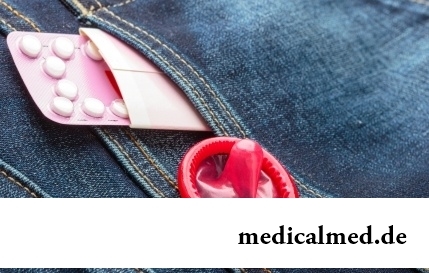
Sometimes it seems that modern society was divided into two camps: representatives of the first are sure that has to for contraception отвеч...
Section: Articles about health
For anybody not a secret that the modern person eats not as his ancestors. For the last 100 years in broad access there were absolutely new products which are result of use of the latest technologies in food production. Significantly changed спо...
Section: Articles about health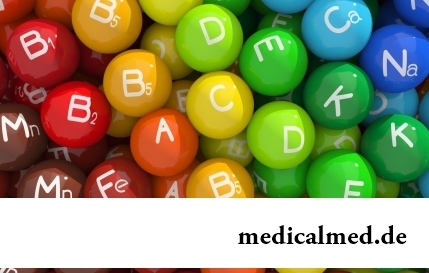
Vitamin complexes belong to the most popular drugs, probably, in our country there is no person who was not hearing about advantage of vitamins and never their accepting. The more vitamins, the better, we consider and as it appeared, cruelly we are mistaken. Whether vitamins, whether so harmlessly general hobby for polyvitaminic complexes and whether it is possible to do without them are so useful? Let's try to understand....
Section: Articles about health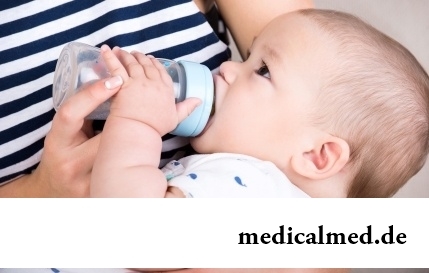
Producers of milk mixes for children assure: mixes are ideally balanced and adapted for needs of babies. In a sluch...
Section: Articles about health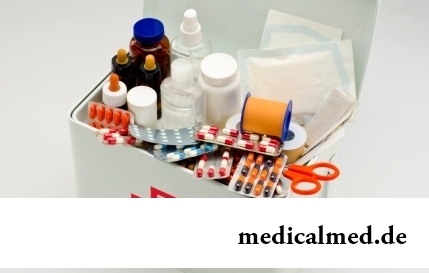
All know that self-treatment is dangerous. However absolutely it is almost impossible to do without it. Rate of modern life does not allow to handle each small trouble to the doctor and information on ways of independent rendering medical the help...
Section: Articles about health
What will only not be thought up by persons interested to have a beautiful figure. Here the last innovation – for weight loss needs to be eaten greasy food. Let's understand whether there is at a fatty diet common sense....
Section: Slideshow
Musicotherapy – a treatment method which caused and causes a set of a controversy concerning its efficiency. However the facts are relentless:...
Section: Articles about health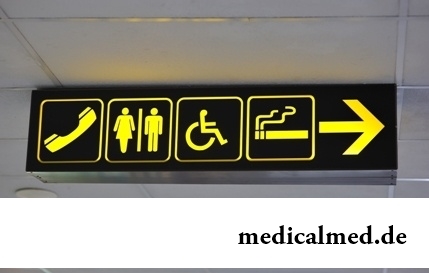
The saying "the rich do not know how the other half lives" is known to all. In a broad sense it is that we can not always understand the person whose features of a state are unknown to us. If with physiological characters of diseases the situation is more or less clearly (having noticed and...
Section: Articles about health
The phenomenon of the panic attack is known long ago, but the reasons of its emergence still are up to the end not found out. It is established that more than 30% of people at least once in life become the victims of very unpleasant phenomenon: without everyones on that the reasons they have a feeling of horror which is followed by a cardiopalmus, a shiver and the fever or feeling of sudden heat increased by sweating, breath constraint, dizziness, nausea....
Section: Articles about health
The sclera and mucous membrane of an eye are intensively supplied with blood vessels which problem - to sate nervous tissues of body to a pitata...
Section: Articles about health
People know that thermal sources have salutary force long ago. Treatment by natural waters is one of the most ancient methods of disposal of the most different diseases. Bathtubs, souls, wrappings and inhalations, in combination with reception of water vnut...
Section: Articles about health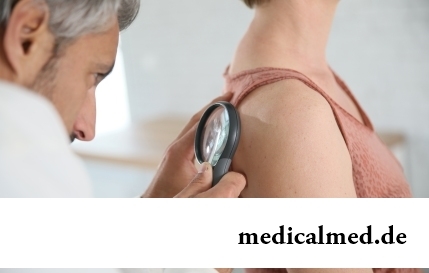
Scientists have no unambiguous opinion on a proximate cause of emergence of a carcinoma cutaneum today. Only the factors promoting development of this illness are precisely established. Treat them: long impact on skin of ultraviolet rays, radiation exposure, thermal injuries, injuries of skin by aggressive chemicals (pitches, acids, alkalis, etc.), genetic predisposition (existence of malignant new growths of skin in the family anamnesis), at...
Section: Articles about health
A little more than a century ago goat milk was a traditional food stuff of most of Russians. Unfortunately, today on tables...
Section: Articles about health
Any person who faced a disease knows that treatment costs expensive. It belongs also to consultations of qualified specialists, and to the diagnostic procedures which are not included in the list of obligatory medical services. Question of cost of medicinal Wednesday...
Section: Articles about health
On the head of the person about one million hair follicles, or as they are called still, hair bulbs are located. At the time of the birth most of them is in the "sleeping" state, but within several weeks follicles become more active, and from them hair begin to grow. Intensity of this process is individual, and during life it can change. Genetic predisposition, a physical and emotional state, aggressive influence affects the growth rate of hair out of...
Section: Articles about health
Statistically, at the address to doctors seven of each ten patients complain of a headache. Actually people, periodically...
Section: Articles about health
Many parents of children at the age of 2-4 years face excessively whimsical behavior of the child. The kid exhausts constant crying and whims not only the parents, but also himself. In what the reasons of children's whims. And how to fight with them?...
Section: Slideshow
Many of us, probably, noticed more than once that from intellectual loadings at some point the brain as though "overheats" and "assimilation" of information is strongly slowed down. Especially this problem urgent for persons of age becomes more senior than fifty years. "Already badly I think", "the head will burst now", "memory as if is disconnected" - here that wants to be told at the time of information overload....
Section: Articles about health
It is pleasant to state a possibility of improvement of quality of life of people with problems of functioning of secretory system. By efforts that...
Section: Articles about health
Statistically, can only one of ten of our compatriots brag of a decent condition of an oral cavity. Six teeth affected with caries are the share of the average Russian. For comparison, this indicator for Europeans almost six times exchanges...
Section: Articles about health
Health and attractiveness - eternal values, pursuing which people often use the most unusual ingredients and technicians. Let's consider 11 most exotic and sometimes not most pleasant Spa procedures to which the person in a pursuit of beauty and youth agrees....
Section: Articles about health
Zone hypostases under eyes - very widespread problem giving to people is a lot of inconvenience. Hypodermic fabric in these parts having...
Section: Articles about health
Statistically, pathologies of a thyroid gland in the world more than 500 million people have. Failures in work of this body lead to heavy disbolism, development of heart diseases, vessels, a reproductive and nervous system. In hard cases excessive...
Section: Articles about health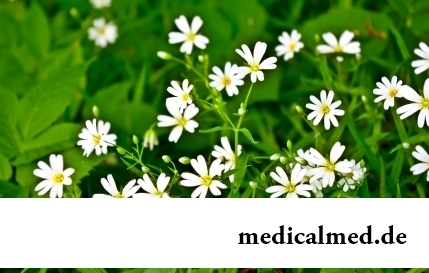
Wood louse – the ordinary-looking unpretentious plant extended in all territory of our country. It quickly expands, and sometimes fills sites, bringing a lot of chagrin to gardeners. Perhaps, they would be upset less if knew that the wood louse is valuable medicinal raw materials. A, C and E vitamins, organic acids, tannins, wax, saponins, lipids, mineral salts and essential oils are its part....
Section: Articles about health
